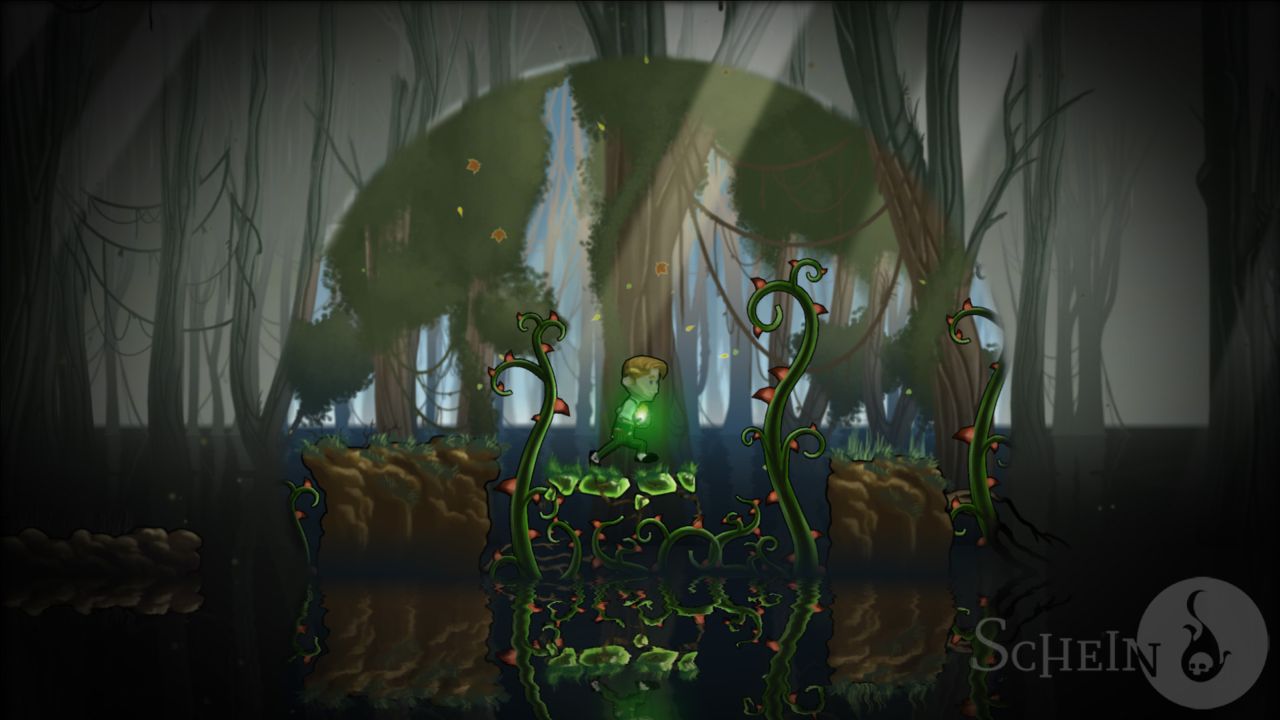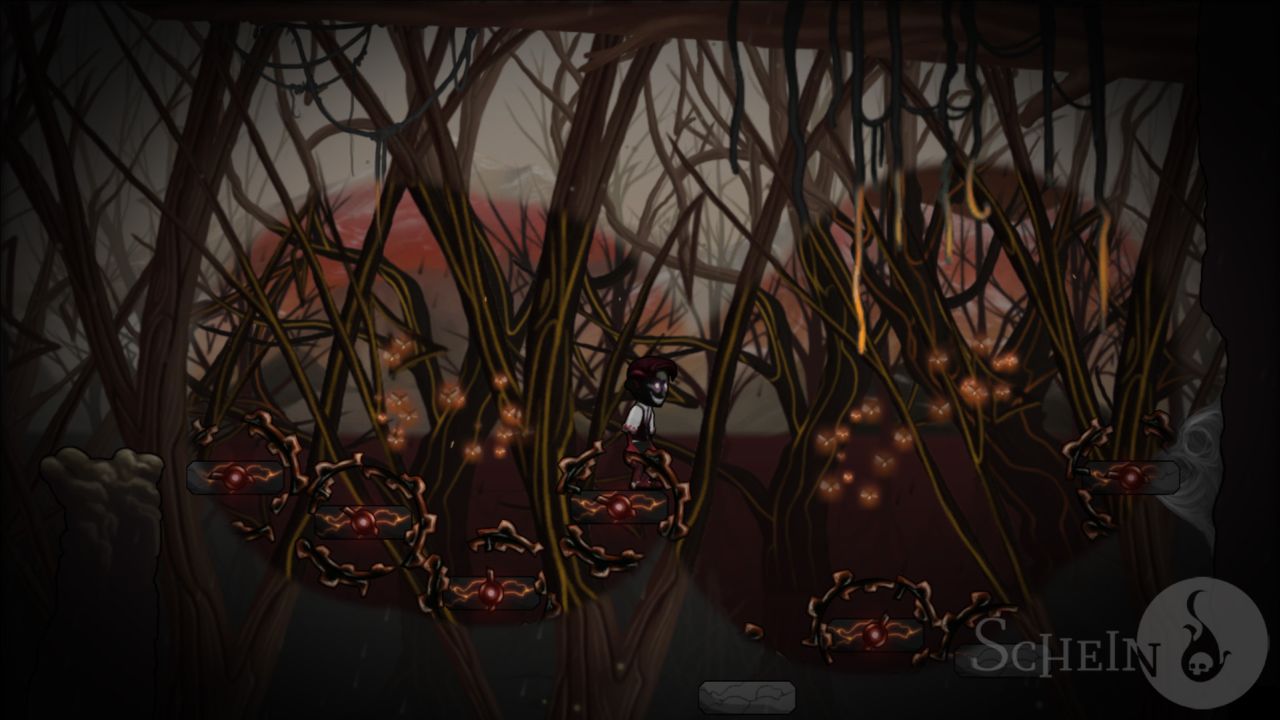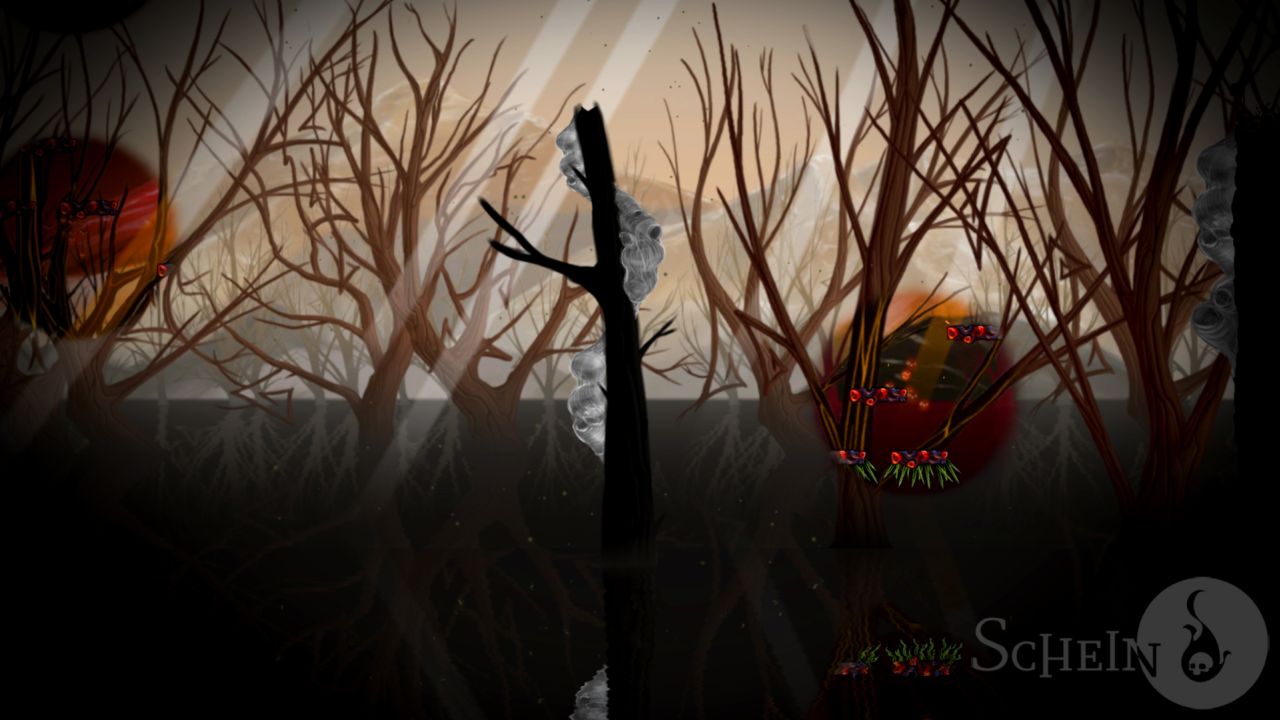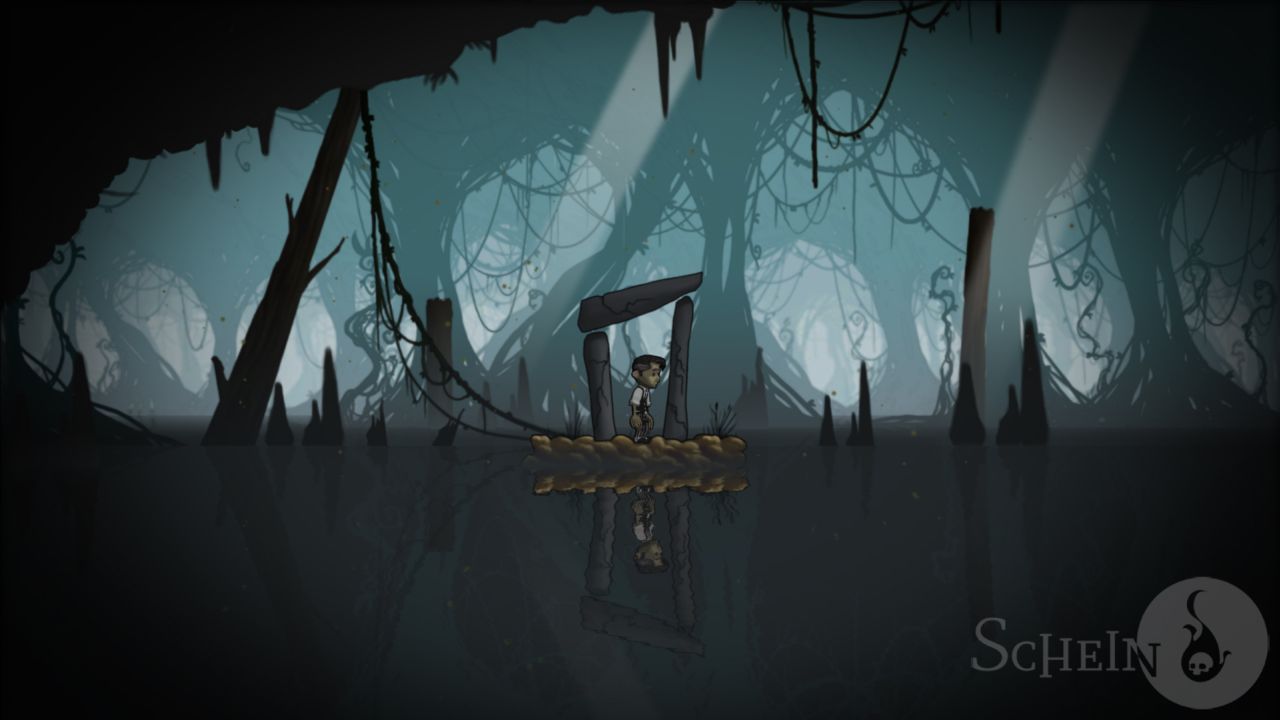Schein Review
A scheining beacon of puzzle design
Look at that, will you? Before this review has even started, you already know everything you need to. You have been clued in on the proper pronunciation of 'Schein' – something that I'm sure will become invaluable in day-to-day life – you have been made privy to my general overall opinion on it, and you have learned that there is no pun, however awful, that somebody will not eventually stoop to. You might also have made some educated guesses as to the contents of this game: indie, arty, and of course, a puzzle-platformer. Good thing, too: I was worried I was going to go a whole year without playing one of its ilk. Life Goes On doesn't pretend to be a depressing character-driven mope-fest, so I'm choosing not to count it.
Sorry, I really shouldn't mock a game for having the grapes to try and write an arty plot, certainly not when looking at what passes for storytelling in the murky tide of mediocrity that laps around our waists. You are an old-ish man looking for your missing son in a dark, treacherous swamp, the exact contents of which are unknown but presumed nasty. Your character never gets a name, or even a solid back-story, but I like to imagine that he works part-time as the protagonist of a Silent Hill game: he's looking for a family member of questionably alive status in an incredibly hostile environment, he gives the faint impression of being the not-so-proud owner of a troubled past, and there's a very real sense that there's nothing in particular stopping him turning around, going home, and putting his feet up by the fire (besides him clearly having nothing else to live for). All that's needed to complete the picture is to assault him with disturbingly symbolic monsters, but sadly there are only platforms and, after a few minutes, a green floating light who accompanies him everywhere, speaking in a slightly posh British accent. She's a sprite, a fairy, or perhaps – given the context – a will-o'-the-wisp, and offers to guide you through the swamp... but why? Ooh, intriguing.

The sprite's light – strictly speaking, she's less of a sprite and more of a particle system – ties in to Schein's central gameplay mechanic, which I like to imagine is the direct result of the developers looking at the industry's infrequent infatuation with dual-world gameplay and going “psh, we can do better than that.” The game has a grand total of four alternate worlds, all overlaid on top of one another, each with their own set of platforms, hazards, and artwork: the normal grey world, where everything is washed out and sombre; the green world, faintly reminiscent of The Wind in the Willows; the red world, which looks like Hell on the day that all the toilets overflowed; and the ghostly Burton-esque blue world. By default you can only see and interact with the grey world, but various lights within your environment – originating from you, your sprite, movable lanterns, and swarms of what I can only assume are fireflies – produce circles of influence that partially reveal the other three worlds, allowing you to achieve otherwise unattainable goals. Around all of this, the puzzles are constructed.
And what glorious puzzles they are. The subtle interactions between the lights, the platforms and the obstacles give rise to an enormously varied number of fresh challenges. I noted in my Life Goes On review that puzzle games that toy with your perception of time and space tend to do better in a medium where spatial awareness is so central, and Schein is, er, a shining example of that. Not only does it ask you to visualise the interactions between its basic elements – many of which are cleverly interlocked all on their own – but also asks you to visualise them in multiple dimensions at once, supplying up to four environments whose relationships between one another you have to keep track of. The trick to success is being able to see things that may not always be there, then considering how and when you can make use of them. When you finally figure out the solution – the deceptively simple solution, the one which makes you thump the table in self-disgust because it's just so elegant and you somehow still missed it – the sense of satisfaction is enough to make nearby people turn away from your blindingly smug glow.

Alright, so it isn't perfect. Around the time you start solving puzzles with more than one kind of light, the game completely drops the ball on explaining the exact rules of how multiple lights interact, creating a whale-sized bump in an otherwise flawless difficulty curve as you struggle to painstakingly extrapolate them from repeated trial-and-error. Better yet, in this context 'error' often means falling through a platform, dying, and starting the whole section all over again, thanks to the repeated appearances of Mr Deadly Spike and his dear wife, Mrs Bottomless Pool Of Deadly Water. The game punishes you with an almost gleeful viciousness for even the most minor mistakes, suspending strings of platforms above hazards where a momentary lapse of concentration means an instant frustrating death, something that's particularly easy to do when you're juggling three lanterns and trying to remember the exact order that you need to move them around in. It feels strangely at odds with the game's sombre, peaceful tone, driving me as it did to the brink of slamming Alt-F4 and going back to Spelunky even while the presentation stayed my hand. Heck, maybe that was a deliberate design choice.
What would a puzzle-platformer be without platforming, though? Well, in Schein's case, probably quite a lot better off. Between the puzzles, like grout between polished tiles, the pure platforming sequences reside, and if that analogy tells you anything it's that I'm far from happy with them. With his low, fixed-height jump, slightly dodgy jumping physics and complete inability to move at any greater pace than a slow jog, the protagonist is just as sprightly as he looks, something that the instant-death hazards make achingly apparent. You could say that it's supposed to be a challenging interlude between the more thoughtful sections, and perhaps it is, but the game's dalliance with multiple dimensions isn't as successful here as it is with the puzzles. Working out exactly which light you need to be casting in order to safely land on solid ground works when you have time to think about it, but when you're hurtling through the air on a moving platform while spikes loom out in front of you, it's a recipe for panicked custard-pie failure. And again, it frankly doesn't suit the game to be forcing awkward, unforgiving jumps on you while trying to quietly tell you a tale. A frustrated audience is not a receptive audience.

Hmm, the tale. I'd like to say it was an inspiring voyage of loss and remembrance – because that's exactly the sort of thing people like to hear when arty puzzle-platformers are involved – and to a small degree I suppose is, but it suffers from being a bit thinly-spread. All of the storytelling consists of dialogue exchanges between you and your sprite companion, and while I'm not opposed to this as a method, the dialogues are so sparsely distributed and often menial in nature that the story feels like a background fixture. Admittedly it's not the kind of premise that requires several church tomes' worth of explanation – man loses son, man looks for son, man uses magic lights to solve puzzles, man falls into a pit five hundred eye-twitching times because of an obnoxious platforming section – and there are a few intriguing lines here and there to draw you forward, but when the climactic twist ending tries to wrap things up, it can only hope to work with the few scraps the rest of the game has granted it. It's as if somebody went through the script one day with a comically oversized set of pruning shears and removed every single sentence that reiterates an existing point, creating a plot that certainly cuts down on redundant dialogue – and more power to you, Schein, if that's your thing – but does it so effectively that it hinges on things that are barely mentioned at all. And why restrict yourself to just dialogue? The game is packed with lovely hand-drawn assets and the interactions between the four worlds create some striking imagery, but it's all for its own sake. There's no meaningful symbolism at work here, no attempt to tell a story without words. At no point will you happen upon an ancient circle of stones or a few tattered rags that once belonged to somebody's shirt; the game communicates solely through its dialogue, and it keeps its lips tightly sealed.

It's tough, really. In the gleaming arsenal of words at a reviewer's disposal, 'pretentious' is a rusty, oversized, double-edged cleaver with serrated edges: you can wield it as gently and elegantly as you like, but it still leaves a horrible bloody mess. Nevertheless – mops at the ready, please – Schein comes across to me as a teensy bit pretentious. It's not the blatant pretentiousness one gets from derivative, 'experimental' walking simulators; more the subtle kind exhibited by a clever game that thinks it's cleverer than it actually is. Everything that Schein presents itself with – the art, the music, the softly-spoken dialogue – points toward a deep, meaningful experience, the sort that's best accompanied by a platter of fine cheeses and some pricey plonk, but step back once it's over and the cardboard-thick narrative is revealed. It's high art without the art.
And now you know when I'm running out of things to complain about, because I'm trying to tell you why a perfectly good game isn't art. Oh, there are other nits to pick – it's a bit on the short side, the final boss is unintuitive, some of the voice acting is stilted and I broke one puzzle by jumping out of the playable area – but they are, comparatively, nits so small that not even the most eagle-eyed kindergarten teacher could spot them. Schein takes an original mechanic, wraps it up with lovely presentation, and doesn't stop running with it until it runs out of ideas. In the face of something like that, the question of pretentiousness doesn't stand a chance.
 Comments
Comments










